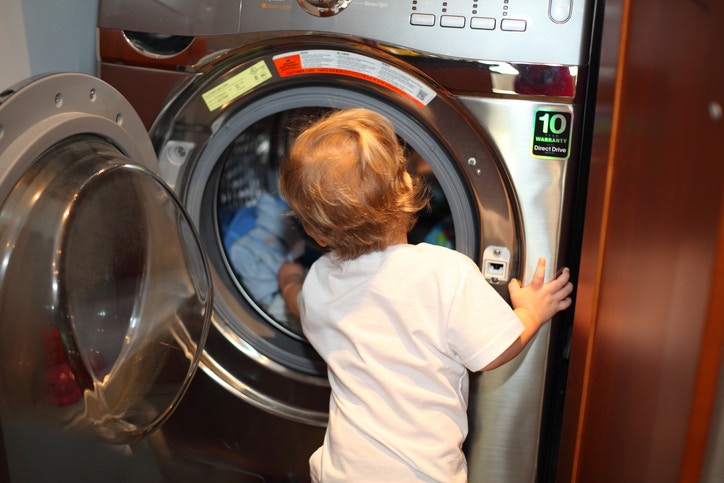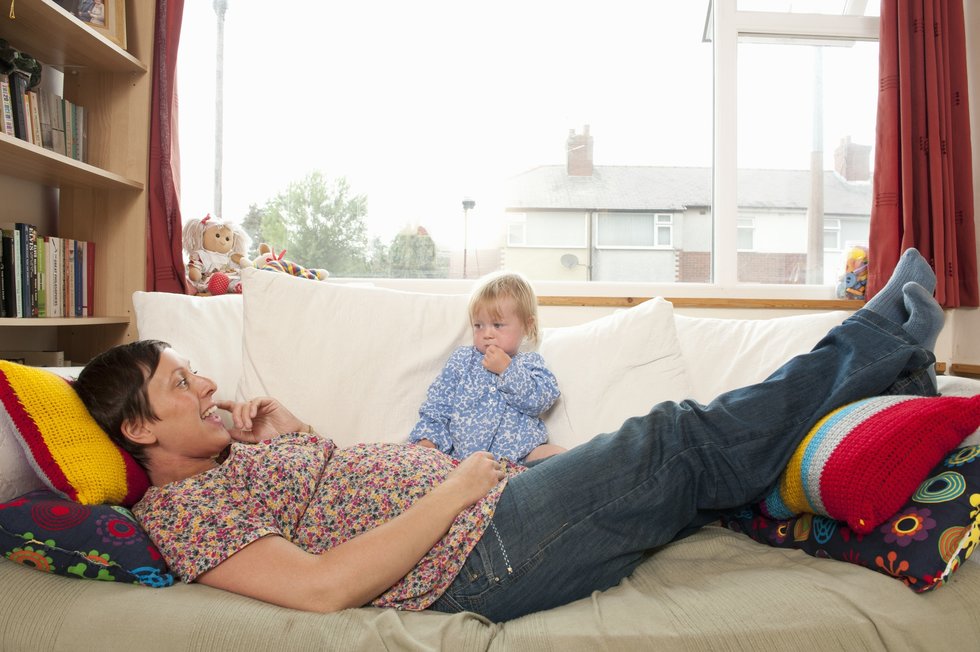This is the general narrative circulated by headlines, like "The Wall Street Journal" article "Laundry-Pod Poisonings Piling Up", which have popped up every few months or so since Tide Pods went on the U.S. market in 2012.
It is reasonable to take the warnings in these articles seriously, because laundry pods do pose a real risk. In a review of laundry pod ingestions in "Pediatrics", researchers studied the outcomes of the 17,230 children whose caregivers called Poison Control after a suspected laundry pod exposure.
Nearly 60 percent of the children required no special medical attention, and 35.4 percent were treated and released (meaning they were sent home from the ER). Only 2.4 percent were admitted to a non-critical care service, while 2 percent were admitted to critical care. The researchers identified one death resulting from laundry pod ingestion during that period.
Given another recent round of articles warning parents of the dangers of laundry pods, it's important to pause and reflect on just how much of a risk laundry pods represent, as well as how we interpret and react to numbers we see in the news.
The missing denominator
Some of the most terrifying and behavior-changing child safety articles begin with a big number, and articles about laundry pods are no exception. CNN's 2014 article on laundry pod poisonings, for example, begins with a number from the "Pediatrics" study: "In the period of about a year, 17,230 children under the age of six have been accidentally poisoned by the packets."
There are two problems with CNN's reporting of this number. First, it incorrectly counts the number of children poisoned by laundry packets in that year. The "Pediatrics" review of laundry poisonings describes the 17,230 children under age six were "exposed" to laundry detergent pods from 2012 to 2013.
"Exposed" is the technical term used by Poison Control Centers to indicate a child has been in contact with a poison, so children whose skin or eyes were irritated by a laundry pod would also be included in that number. "Poisoned" also suggests a serious medical condition, but the "Pediatrics" review makes clear that 60 percent of children exposed did not require any medical attention, and another 35 percent were treated and released from the ER.
The CNN's reporting of 17,230 calls to Poison Control is further problematic because its significance is only ever implied. This is a big, scary number. It sounds like a reason for drastic action. And it may be. But without other numbers – without context – it's impossible to know how serious or prevalent that figure of 17,230 actually is.
This number can be contextualized in many ways. It could be compared to the population of children from birth to age six (US Census data lets us estimate this at just under 24 million) to show that in .07 percent of the population, caregivers for seven in 10,000 kids called Poison Control concerned about laundry detergent exposure. Far fewer than that were hospitalized.
Identifying a denominator does not mean we should be careless with how we store our chemicals. It does mean we can develop a more accurate sense of what is benign, risky, dangerous, or fatal. Identifying a denominator can also help us make comparisons between products.
One surprising finding of research into pod-based detergents is that dishwasher detergent pods, which are arguably more accessible to kids because of their typical storage locations, are less dangerous than laundry detergent pods. They tend to be stored in even more child-friendly areas (under a sink, for example), and yet present less of a hazard when ingested.
Takeaway: When confronted with a number that sounds scary, look for the denominator.
A number used to answer the wrong question
What about a big number that does have a denominator? Even those numbers deserve a closer look, because they are often insufficient evidence for the questions they are being used to answer.
Reports on laundry pod ingestion appear grim, but what's less clear is whether those represent a change in consumption of laundry detergents generally. To find that, we need to focus less on the number of children who ingest pods and more on the number of children who ingested detergent prior to the creation of pods.
Most of the grim statistics about laundry detergent poisoning come from 2012 or later, when the American Association of Poison Control Centers (AAPCC) developed separate codes for laundry pod ingestion. The AAPCC reports that laundry pod exposures reported to Poison Control Centers have risen each year from 2012 to 2015. With 9,787 exposures as of October 31, 2016 might stop this trend (in 2015 there were over 12,000 exposures).
Although Tide Pods were released in 2012, making laundry pods more visible to consumers, laundry pods have been in the U.S. detergent market since 2010. Looking to laundry detergent exposures reported to Poison Control Centers before 2010 can help fill in the picture of whether the pods themselves are leading to more exposures, or whether children are simply shifting their ingestion from one form of detergent to another.
The question, essentially, is whether children are ingesting laundry pods in greater numbers than they were before, or if they are just ingesting new types of detergent than they were before.
This is one area in which further study supports the original reported numbers. The AAPCC's 2009 report shows in children ages zero to 19 across all types of detergent. The AAPCC's 2012 report shows 6,678 liquid laundry detergent exposures in children ages zero to five alone; that is, one category of laundry detergent in one segment of the child population in 2012 almost matched all laundry detergent exposures for the entire child population in 2009.
The overall numbers are still quite small when taken in the context of the entire child population of the U.S., but it's clear that there's been a real increase in the number of laundry detergent exposures since laundry pods went on the market.
Laundry pod poisonings appear to present a new safety hazard because there has been an increase of calls to poison control since their entrance on the market. But a rise in calls ("exposures") does not necessarily mean that the pods are more dangerous. It could be that awareness of laundry pod poisonings makes parents (reasonably) more concerned, resulting in more phone calls to Poison Control centers even if there is not an increased risk of poisoning due to the pod.
Takeaway: When seeing the words "increase" or "decrease," ask what points those increases or decreases are being used to prove. Then ask what else those increases and decreases might prove.
Drawing assumptions from cohort comparisons
According to Poison Control records cited by both of the "Pediatrics" studies, the average age of children ingesting laundry pods differs from the average age of children ingesting other types of detergent. The most popular theory for this age difference is that the pods look like candy. One "Consumer Reports" graphic depicts the pods in a flat lay of candy, asking readers if they can spot the pods. Much of the medical literature makes the same assumption that laundry pods are more appealing because they look like candy.
We should examine that assumption with skepticism. If it's true that the majority of laundry pod poisonings are occurring in children under age three, the focus on "candy" might not be warranted. A sevent-month-old biting into a laundry pod isn't doing so because it looks like candy. A seven-month-old is biting into a pod because she can, because it's a thing within her reach and she's going to explore it with her mouth.
The population we might need to be more concerned about is patients with dementia, who have been reported to mistake the pods for candy.
Instead of assuming a manufacturing problem (detergent producers making their dangerous product too appealing to young children), it's possible that the age difference is not related to the children, but their parents. In "The Power of Habit", Charles Duhigg argues that people make the most significant changes to their lifelong shopping when a new baby enters the family.
If people are most likely to switch brands during major life changes, new parents shopping for laundry detergent in 2012 might have been more convinced to purchase pods. We can test this last theory by watching whether the age of ingestion changes as the pods are on the market longer.
Takeaway: Comparisons between groups are full of confounding variables. Ask what other factors may describe group differences.
The case study to boost awareness
One of the stickiest problems with articles about child safety is the type of data used to bring attention to a new possible danger. Most of the stories about laundry pods, for example, are based on single case reports – which certainly bring important attention to the potential dangers of the pods. Case reports are also valuable in medical literature, because they become the first steps toward determining the root causes of, and potential cures for, illness. But when used as proof of a new and terrifying phenomenon, case studies may inflate overall risks.
These case studies resonate with us because these parents have just experienced our worst nightmare. But the stories may cause us to be unnecessarily risk averse. The parents in these studies have won the world's worst lottery – losing children to extremely rare accidents. Reading these stories may sway us to change our purchase decisions. But if we look at child deaths from all detergents, we'll note that parents lose that horrible lottery, too.
includes one death from dishwasher detergent of an unspecified type, as well as one death from hand dishwashing detergent, one death from laundry detergent granules, and one death from from liquid laundry detergent. These detergent deaths are not grouped by age, so it's not possible to link them with any age group without further study. But any study of the danger of a particular type of detergent will need to take the other forms of detergent into account.
Takeaway: Don't make unilateral changes based on single case studies, which can obscure less publicized, but nearly equivalent risks.
The verdict
The current available data about laundry pod poisonings paints a much different picture than the stories we see reported every few months. When ingested, laundry pods tend to deliver a more concentrated dose of detergent, which can lead to more serious health risks.
Then again, there is a very slim possibility that a child will eat one, a slimmer still chance that a pod will cause serious injury, and a yet slimmer still chance of death. Furthermore, there is a risk of death with any detergent, and parents cannot completely avoid this risk unless they plan never to do laundry again.
It is reasonable to be cautious about laundry pods because of the specific dangers of ingesting more concentrated detergent with a single bite, but it's also reasonable to read the data on laundry pod poisonings and make a calculated decision to use them.



